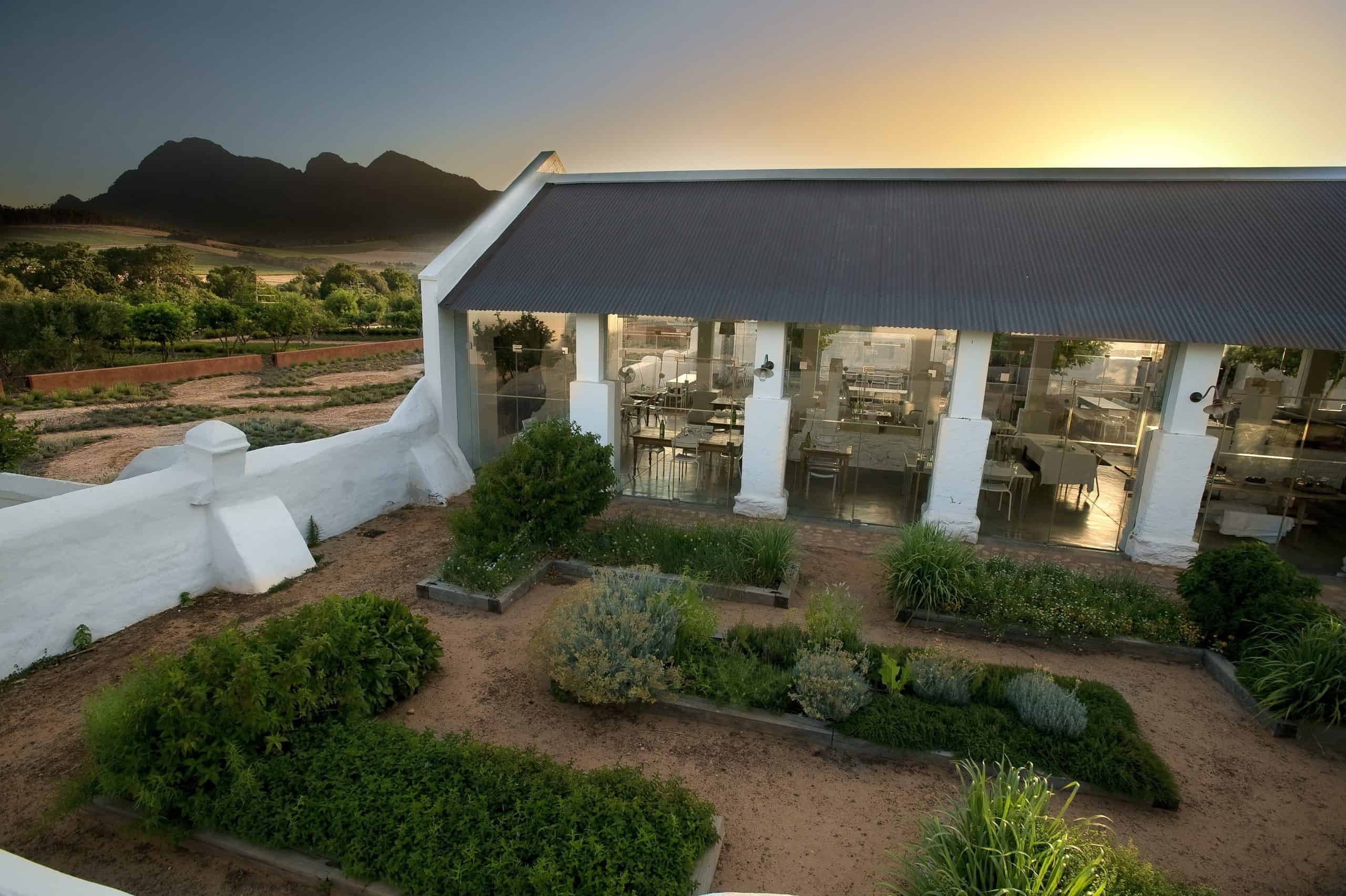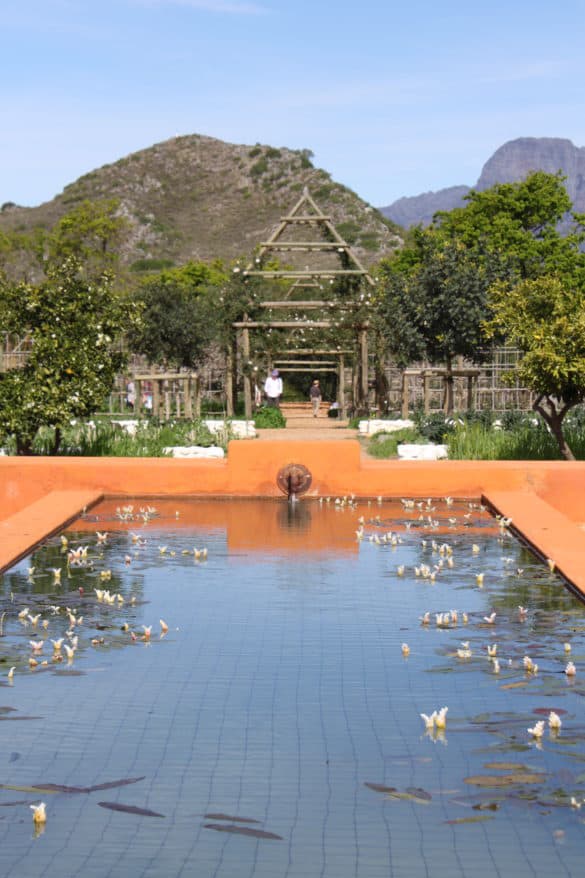The menu at this magnificent estate in South Africa’s Cape Winelands begins with the garden. And what a garden it is! Catherine Marshall goes foraging.
On the kitchen table sits a wooden box brimming with glossy vegetables. Beyond it, through the sheer glass kitchen walls, sprawls the garden from which these edibles were plucked just an hour ago. Framing this at once provincial and luxurious scene are the majestic Simonsberg Mountains, great slabs of granite carved with creases and crenelations and gauges running many centuries deep.
The vegetables are an appropriate welcome gift, for this estate named Babylonstoren was once a colonial refreshment station for ships passing the Cape of Good Hope. But this mountain-rimmed property, set between the towns of Stellenbosch and Franschoek in South Africa’s sublime Cape Winelands, is also a study in the art of transformation.
While the Manor House retains its original grandness, the labourers’ cottages barely resemble their former selves. Their simple, whitewashed facades conceal within them finely appointed rooms, furnished in the Cape Dutch fashion but underscored with a lavish swirl of contemporary style: mirrored French bathrooms, enveloping terry robes, stainless steel stovetops and those endless glass walls opening out onto the garden for which the estate served its earliest purpose.
A rich green belt
The garden – three-and-a-half hectares in size – is still crucial to the functioning of Babylonstoren, now a five-star hotel whose centrepiece is a restaurant named Babel.
Much of the produce used in Babel is grown here. Beetroot and pineapple sage are plucked fresh from the earth to make morning juices; leaves are torn from the curry plant and left to infuse evening dishes; heart-shaped baby sorrel leaves are tossed into salads; few diners would comprehend they’re eating a weed.
The menu starts with the garden, after all, and the garden is a meticulously thought-out construction lovingly tended by headgardener, Liesl van der Walt.It forms a rich green belt, set as it is beside a stream running all the way up to the Simonsberg.
Liesl is walking me through the garden, around the neatly arranged beds and orchards and trellises that produce plants that are either edible or useful in some way. There’s a labyrinth flanked by scented lavender on one side and spekboom – an indigenous shrub now growing in popularity due to its ability to absorb carbon – on the other.
There are big old pear trees and quinces spilling over the trellises. There’s the magnificent clivia walk with its orange and cream blooms, the arum lilies and the wild African olives with their lovely sweet fruit. There are nasturtiums spreading like fire beside the river, the red cabbage and peas, legumes and potatoes, and combination plantings of onions and carrots.
No ordinary garden

This is no ordinary garden: it was designed by French architect Patrice Caravella, and was inspired by the garden he designed for his own home, a monastery dating back to the Middle Ages.
“In the Middle Ages, gardens were biblically inspired, but the main reason for the garden was to feed mind, body and soul,” Liesl explains. “I would like to think that you would also experience that in this garden. There’s that sense of enclosure, that you’re coming into a safe place.”
Indeed, a sense of welcome and refuge has been achieved here in this garden at Babylonstoren. The sound of water trickling along the irrigation canals that collect water from the stream and run into the tilapia and trout and waterblommetjie pools further along. Benches in quiet spots beckon you to rest awhile. Fruit-laden guava trees and the sour figs crowded beneath them tempt you to eat. Tucked into a corner of the garden is the chicken coop.
“Hello, hello, do we have an egg?” Liesl trills to the heritage hens pecking about. “I feel guilty taking without asking.”
The birds give up their bounty without fuss. The eggs will be served at tomorrow’s breakfast table; the yolks will be fat and yellow and delicious, and no wonder, for these hens feast off great big bunches of swiss chard and withering vegetables thrown over the fence.
Sadly, there’s only one tree in this garden that remains from the original refreshment station: a Brazilian tree whose seeds are edible. But Liesl can see a future in which this farm’s progeny can be enjoyed by generations yet to come.
“I’m trying to restrict myself to local trees and trees that I know give good wood,” she explains. “So the dream is that in maybe 100 or 50 years someone might say, ‘Oh, we need a table, let’s go and chop down a yellowwood’.”
With this in mind, Liesl has planted boekenhout and yellowwood trees around the dam overlooking the farm, and she’s underplanted them with pioneers that will come up quickly. She hopes that that one day the saplings will form a mighty, bird-filled forest whose trees people not yet born will picnic beneath. And while the trees go about the business of growing, she’ll nurture plants with which to feed today’s diners who gather around Babel’s groaning, colour-filled tables. TTW
Catherine Marshall was a guest of Babylonstoren. Photos © Catherine Marshall.



